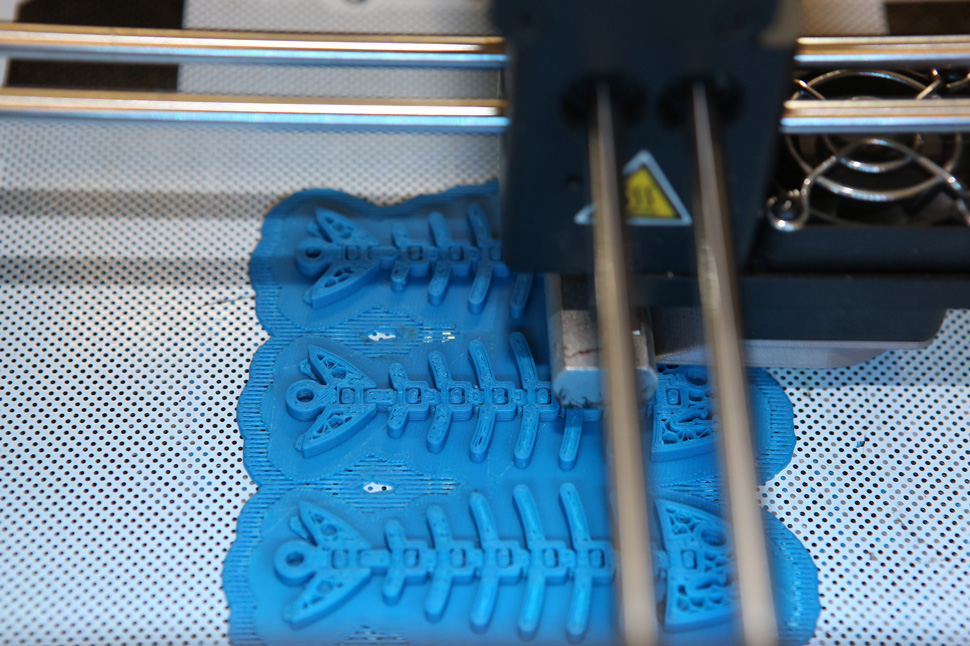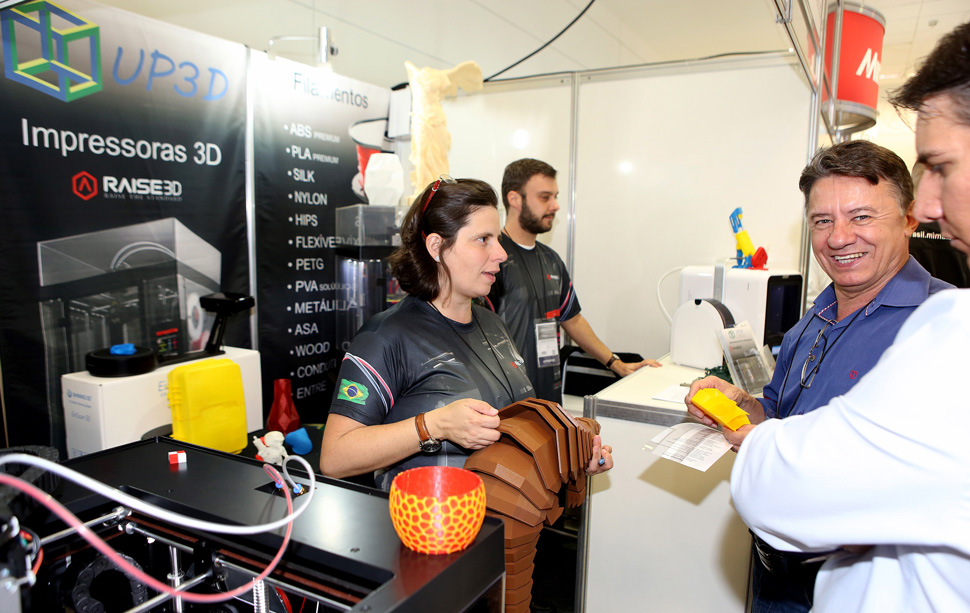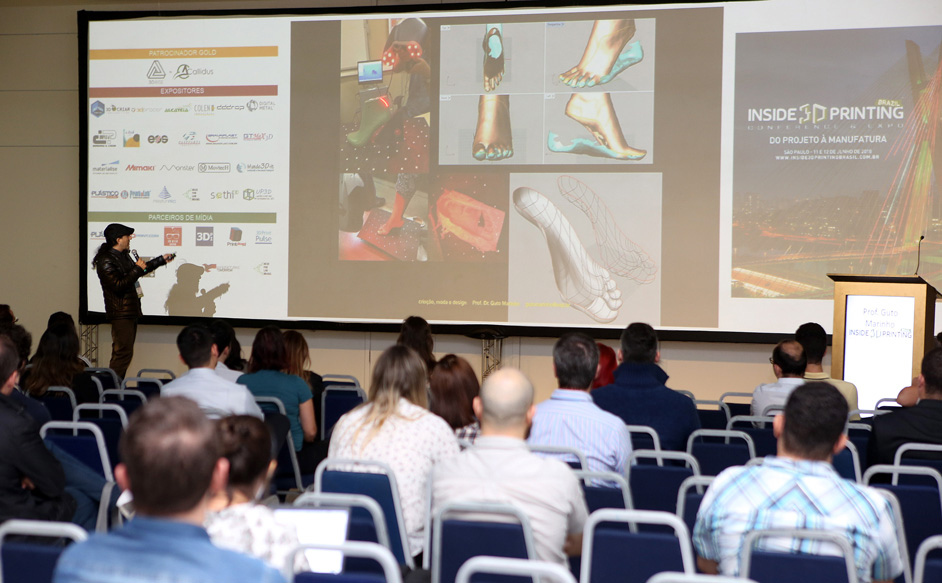Additive manufacturing, or 3D printing, took its first steps in Brazil in the 1990s and is finally reaching the exposure it deserves, not only as a prototyping resource but also as an adaptable manufacturing technique. By combining the resources of mass production with its customization possibilities, 3D printing is well capable of meeting many demands for consumer goods.

According to São Paulo’s IDC do Brasil, a market intelligence consulting firm, 37% of information technology investments in Latin America are channeled to Brazil, so we can infer that the Brazilian market received 3D printing investments of around US$15 million in 2018—an increase of 34% over 2017. With a predicted 25% growth in 2019, industrial investors would do well to follow this segment closely.
IDC’s analyst Rodrigo Pereira details the total invested in the Latin American 3D printing market in 2018 as: 28.5% in printer purchases; 44% in process inputs (polymer filaments, metallic powders, etc.); and 23% for systems integration services, consulting, and other services related to the production of parts on demand. The remaining 4.5% involve spending on software for rendering, conversion, and file manipulation.

When tallying the investments distribution along the so-called “vertical” axis—that is, the economic areas where 3D printing is used—IDC gets figures that reveal this technology’s potential in solving typical industrial problems:
– 60.5% of the investments is in industry and concentrates on the execution of tasks related to “discrete production”—that is, of products that can be counted in units and taken apart at the end of their life cycle, which includes automobiles, home appliances and consumer electronics;

– 13% is in the health segment, including medical applications, biotechnology, prostheses, implants and dentistry;
– the remaining 26.5% is in education (learning tools for courses such as medicine, engineering and architecture) and in building, in modeling for design, mock-ups, tools, etc.
When tallied by purpose or segment, investments are distributed at 39% in prototyping for product development, execution of mock-ups and small sets; 30% in manufacturing itself, with printer integration along production processes; 12% in the tooling and molding sector; and the remaining 19% in various different applications, including leisure and entertainment.
This technology has been growing much more accessible through the reduction in prices and the increase in the supply of equipment, as well as the evolution of 3D printing processes. In plastic products manufacture, the adoption of 3D has followed the pace of the digital transformation currently underway in industry. By the end of 2018, Plástico Industrial magazine’s biannual report found that 3D printers are present in around 5% of the plastic transformation industry. This represents a slow but consistent adoption rate, which today means something around 347 machines in operation.
Market innovations highlighted at event
In their turn, printers and materials have been developing very fast. New types of dedicated plastic filaments and metal powders are regularly announced. As for the machines themselves, the current spotlight is on printers capable of delivering metal parts on demand, with complete design freedom; these have been contributing to the emergence of a new paradigm in a playing field that is already brimming with possibilities and opportunities.
Some of those machines will be on display at the 4th edition of Inside 3D Printing, at the Frei Caneca Convention Center in São Paulo, Brazil, on June 10 and 11. Organized by Aranda Eventos, the trade show will feature an extensive program of lectures and an exhibition of the various resources and supplies of the 3D printing market.
The exhibitors are established suppliers of machinery and materials as well as service providers. They include 3D create, 3D Procer, Additiva Chemicals, Alcateia, Transire, DDDrop, EOS, Etech Brasil, GT Max 3D, M.Braun, Infocus Lasertech, Materialise , Oderço, Sethi, Topink 3D, Up3D, Ultralline and Wanhao. You can learn more about each of those at https://inside3dprintingbrasil.com.br, where you can also check out the lecture program on the various aspects of 3D printing.
Aranda Eventos – Tel. (5511) 38245300, https://inside3dprintingbrasil.com.br/
IDC – tel. (5511) 55083400, https://br.idclatin.com/
Subscribe to Our Email Newsletter
Stay up-to-date on all the latest news from the 3D printing industry and receive information and offers from third party vendors.
You May Also Like
Profiling a Construction 3D Printing Pioneer: US Army Corps of Engineers’ Megan Kreiger
The world of construction 3D printing is still so new that the true experts can probably be counted on two hands. Among them is Megan Kreiger, Portfolio Manager of Additive...
US Army Corps of Engineers Taps Lincoln Electric & Eaton for Largest 3D Printed US Civil Works Part
The Soo Locks sit on the US-Canadian border, enabling maritime travel between Lake Superior and Lake Huron, from which ships can reach the rest of the Great Lakes. Crafts carrying...
Construction 3D Printing CEO Reflects on Being Female in Construction
Natalie Wadley, CEO of ChangeMaker3D, could hear the words of her daughter sitting next to her resounding in her head. “Mum, MUM, you’ve won!” Wadley had just won the prestigious...
1Print to Commercialize 3D Printed Coastal Resilience Solutions
1Print, a company that specializes in deploying additive construction (AC) for infrastructure projects, has entered an agreement with the University of Miami (UM) to accelerate commercialization of the SEAHIVE shoreline...





























